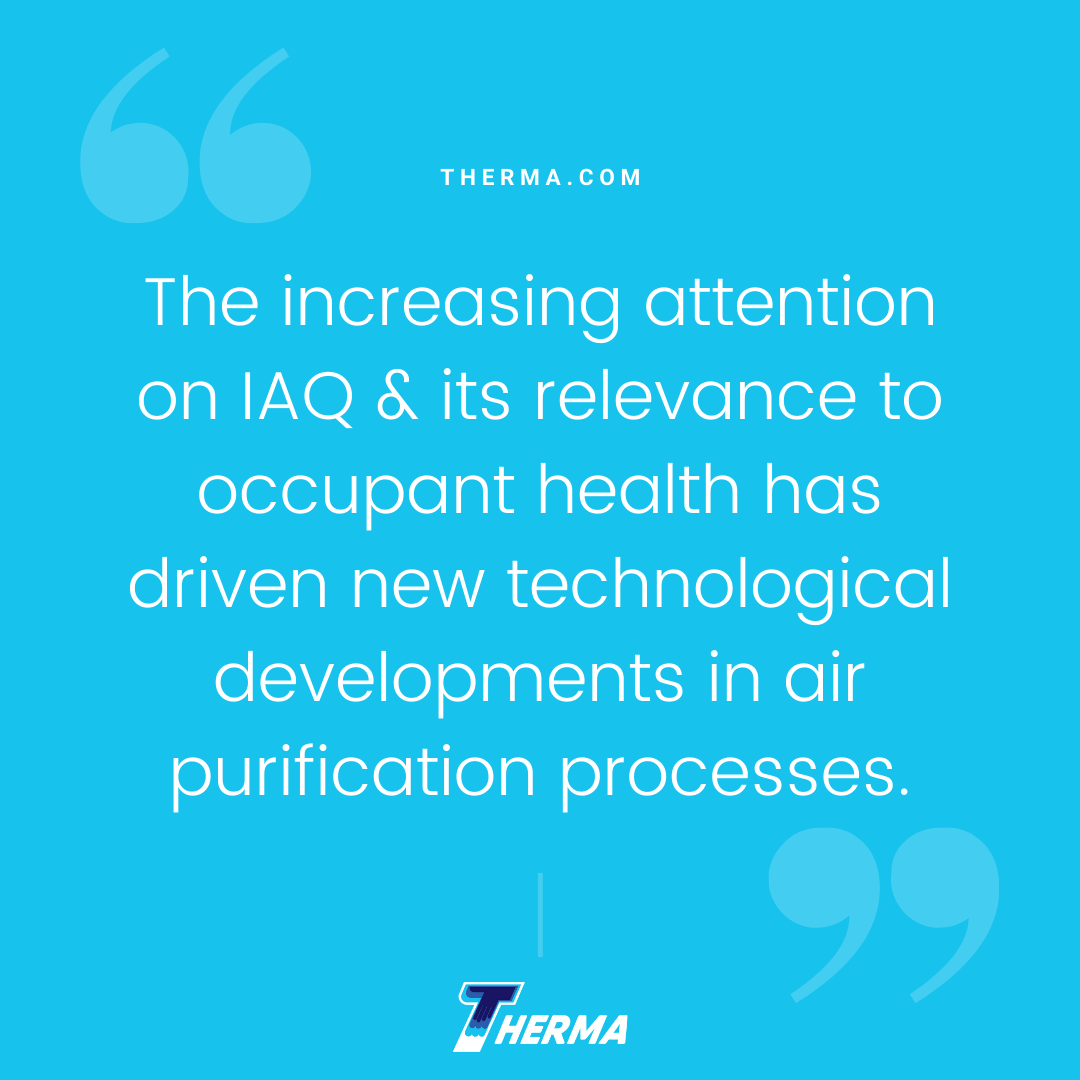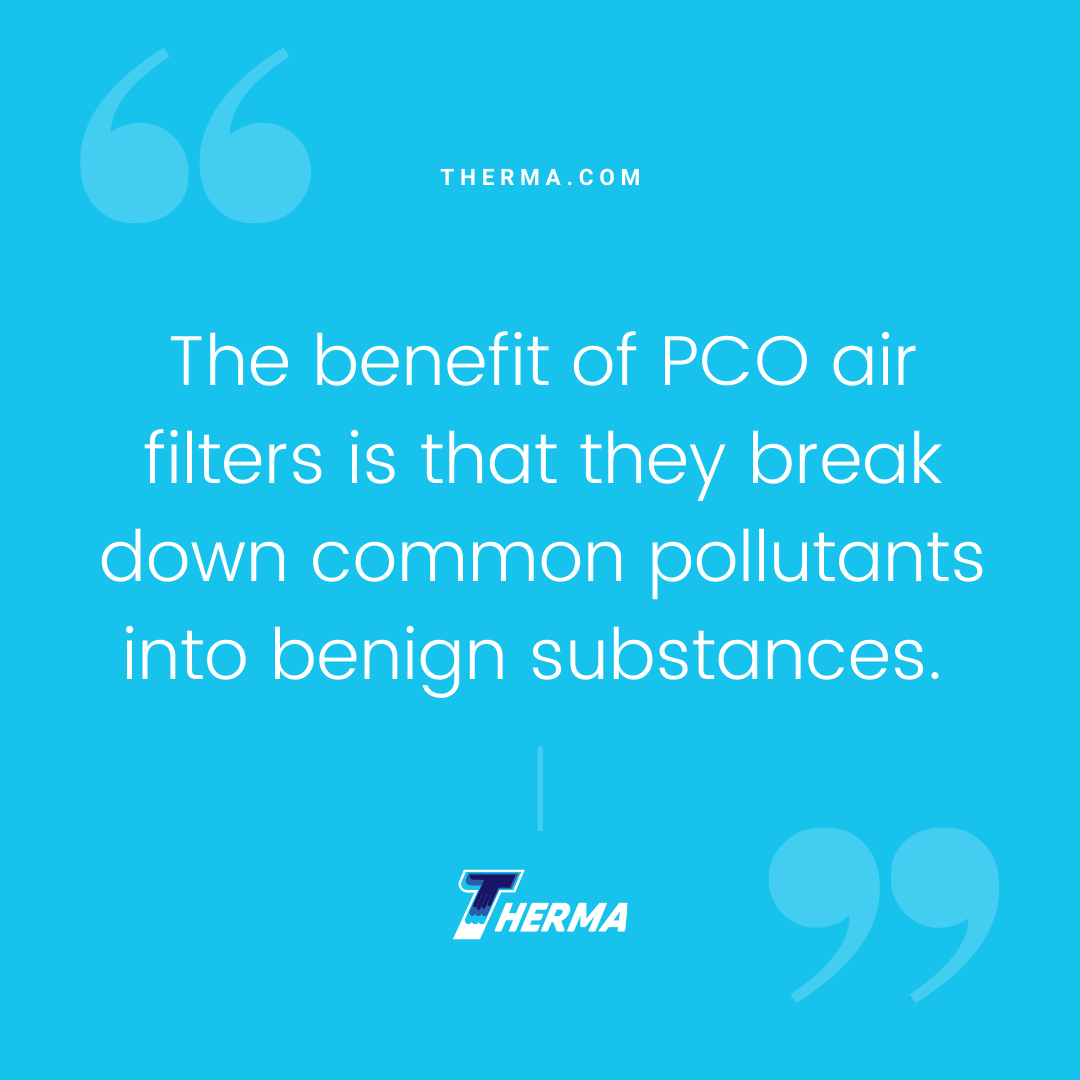by Ali Kriscenski
How to prevent toxins, provide natural light and purify air are important topics concerning a building’s indoor environment and the health of its occupants. Indoor air quality (IAQ) has become integrated into green building practices as a measure of healthy buildings. While it may seem like a subjective topic, the materials, systems and protocols for building construction and maintenance related to IAQ are the subject of extensive studies that set accessible guidelines.
The Leadership in Energy and Environmental Design (LEED) standards from the US Green Building Council (USGBC) provide measurable guidelines for acceptable limits of a wide range of toxins and ratings for IAQ. These toxins include chemicals found in common building materials such as paint, flooring, wood and other finish materials. Whether building new, remodeling, or just looking to improve your building’s indoor air quality, there are a wide range of air purification technologies available.

Indoor Air Quality and Occupant Health
The focus on IAQ in building materials and technologies is the result of scientific evidence of the effects building environment’s have on occupant health. Building materials can release (or off-gas) toxins into the air, often referred to as volatile organic compounds (VOCs) that are harmful to human health. Allergens, pollutants and gases can enter buildings through ventilation, mechanical systems, or simply through occupant egress in air movement. They also can attach to materials that enter the building, such as shoes or deliveries.
Once inside a building, these chemicals and allergens can cause respiratory illness, headaches, fatigue and other significant health issues. In some instances, these effects can be traced to a specific contaminant and in others, the source of the effects is less traceable—also known as ‘sick building syndrome’. In both circumstances, the symptoms can create short and long-term health problems that result in occupant discomfort, illness and absenteeism.
Mitigating Indoor Air Pollutants
The increasing attention on IAQ and its relevance to occupant health has driven new technological developments in air purification processes. Most recently, concerns with infection control surrounding COVID-19 and occupant safety has created a focus on different kinds of air filtration and how to purify air to prevent the spread of disease. Here’s a look at two common types of air purification and how they can benefit your facility.
Photocatalytic Oxidation (PCO)
Photocatalytic oxidation sounds complicated, but it is fairly straightforward. The process utilizes UV radiation combined with a catalyst to break down pollutants. Air filters using PCO typically use a catalyst like titanium dioxide, which acts as a semiconductor to attack molecules of pollutants. When a pollutant comes into contact with UV-activated titanium dioxide, it is broken down into less worrisome compounds, such as carbon dioxide and water.
The benefit of PCO air filters is that they break down common pollutants into benign substances, effectively removing them from the indoor environment. The downside is that because these filters effectively use oxidation, they can produce a variant of oxygen which is harmful—O3 or ozone. The amount of ozone produced is typically within safe limits, but it is a consideration. Another factor to keep in mind:when used in environments with volatile organic compounds (VOCs), these air filters may change those compounds into unwanted toxins such as formaldehyde.
Photo Electrochemical Oxidation (PECO)
With PECO, a similar process is followed using an alteration in the band of UV light and of the catalyst. PECO uses low-energy UV-A light, whereas most PCO filters use UV-C. PECO air filters also use a proprietary catalyst. These variances distinguish PECO as an evolution of PCO technology, in that the process doesn’t produce ozone and is more effective on VOCs, such as formaldehyde. The PECO-type air purification filter is newer than PCO—with less history of independent testing—but the technology is promising.
PCO or PECO: Which is More Effective for Indoor Air Quality?
How to choose the right technology for your building or facility depends on many factors. While both PCO and PECO provide air purification benefits, their effectiveness and usefulness needs to be weighed against the type of building (residential, industrial, manufacturing, etc), the building’s size and also the age of the building or facility. Lastly, cost-effectiveness is another factor to consider, especially against the scale of your indoor environment. Consider how air purification processes will complement other IAQ strategies already in place.
Ali Kriscenski was trained in high-performance building design at Boston Architectural College. She has worked with leading architecture and construction firms in NYC and New England and served on the executive team at Forest Stewardship Council International. She was Managing Editor at Inhabitat and has worked pro bono for the Green Building Institute, ISEAL Alliance and Habitat for Humanity.








